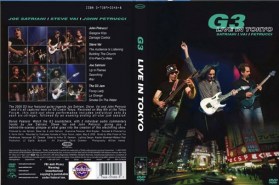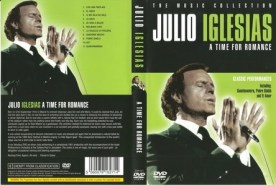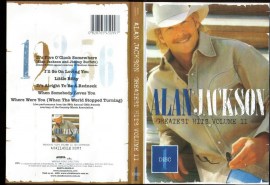
Charlie Hunter: Solos - The Jazz Sessions (2011)

แผ่นไรท์+ข้อมูล แผ่นสกรีน พร้อมปกสี หน้า-หลัง ไม่มีกล่อง (เพิ่มกล่องเปล่าใบละ10บาท)
CLONE Original from Master 100%
ไม่ขายแผ่นไรท์เปล่า ๆ ขาว ๆ นวล ๆ ติดสติกเกอร์ หรือใช้ปากกาสี เขียนบนแผ่น
อีกหนึ่งทางเลือก > อยากได้เพลงของใคร แผ่นไหน ชุดไหนทั้งไทยและเทศ สากล เก่าใหม่ แผ่นแท้หาซื้อที่ไหนไม่ได้แล้ว มือสองก็ราคาไปไกลเกินปก ค้นหาสินค้าในร้านไม่เห็น
สอบถามเพิ่มเติม ฝากข้อความได้ (ไม่สะดวกรับ order ทางโทรศัพท์)
097-457-6471 id Line sabaycd
088-555-2703 id Line sabuycd
ใช้เน็ท ค่ายทรู/ดีแทค แล้วเข้า sabaycd.com ไม่ได้ให้ไปเข้าที่ www.sabuycd.com แทนนะคะ

As a young guitarist growing up in the San Francisco Bay Area, Charlie Hunter was looking for a way to stand out in the '80s. His primary influences were jazz great Joe Pass and the fluid Tuck Andress (of the guitar/vocal duo Tuck & Patti), both six-string guitarists who were adept at blending bass notes into their standard guitar melodies to make themselves sound like two musicians at once. But Hunter wanted to take it one step further, and set out to find an instrument on which he could simultaneously function as both a guitarist and a bassist. For his self-titled 1993 debut CD, Hunter played a seven-string guitar for the duality effect, locking down the bottom with drummer Jay Lane and mixing melodically with saxophonist David Ellis. But on his trio's 1995 sophomore release, Bing, Bing, Bing!, Hunter unveiled his custom-made Novax eight-string, the guitar that finally allowed him to realize his capacity. Designed by Ralph Novak, the instrument featured special frets and separate signals for its guitar and bass portions. Picking bass notes with his right thumb while fretting them with his left index finger (while at the same time fingerpicking guitar chords and single notes with his right hand's remaining four digits as he frets with his left hand's other three fingers), Hunter achieves the real sound of two-for-one.
Hunter played with the side group T.J. Kirk in the mid-'90s, a band that derived their name from the cover material they exclusively played: Thelonious Monk, James Brown, and Rahsaan Roland Kirk. Initially wanting to call themselves James T. Kirk before being threatened by the Star Trek TV and film series, T.J. Kirk released a self-titled 1995 debut and the 1996 follow-up, If Four Was One, before disbanding. Hunter took drummer Scott Amendola with him for his next project, an ambitious instrumental remake of Bob Marley's Natty Dread album in its entirety. Also featuring saxophonists Kenny Brooks and Calder Spanier, the 1997 release beat the odds by becoming arguably Hunter's best album. After Spanier died from injuries sustained from being hit by a car, Hunter moved east to New York, taking Amendola with him. Teaming with vibraphonist Stefon Harris and percussionist John Santos, Charlie Hunter & Pound for Pound's 1998 CD Return of the Candyman is dedicated to Spanier. A departure from Natty Dread, mainly due to the work of Harris, the disc featured a vibes-heavy cover of Steve Miller's "Fly Like an Eagle."
Hunter's modus operandi had now become shifting personnel changes, and in between tours he recorded a 1999 duo CD with drummer/percussionist Leon Parker and a self-titled 2000 CD that featured Parker and an otherwise ensemble cast. Hunter also contributed greatly to the 2000 comeback CD by drummer Mike Clark, Actual Proof. Hunter concluded his run at Blue Note with 2001's Songs from the Analog Playground, which saw him collaborating with vocalists for the first time, ranging from labelmates Norah Jones and Kurt Elling to Mos Def. 2003 found Hunter with a new label (Ropeadope) and two new bands (the Charlie Hunter Quintet) on Right Now Move, and the beginning of Groundtruther, a partnership with percussionist/composer Bobby Previte. They released Come in Red Dog, This Is Tango Leader before adopting the Groundtruther moniker. For 2003's Friends Seen and Unseen, it was back to the Charlie Hunter Trio, with drummer Derrek Phillips and saxman John Ellis, both members of the Quintet. By now, Groundtruther had taken on a life of its own, with Hunter and Previte joined by a rotating third member. Latitude was first, in 2004 with saxophonist Greg Osby, followed by Longitude with DJ Logic in 2005.
In 2006, the Charlie Hunter Trio resurfaced with Copperopolis and almost immediately announced that it was disbanding as Ellis wanted to further pursue a solo career. What to do? Form another trio! After recruiting Erik Deutsch on keys and Simon Lott on drums, they released Mistico in the summer of 2007, Hunter's first album for Fantasy.
1. Play Program [2:02]
2. 11 Bars for Ghandi [5:41]
3. 8 String Guitar Jam [2:16]
4. My Heart Belongs to Daddy [6:17]
5. Stars Fell on Alabama [7:39]
6. Oakland [7:40]
7. Untitled Ballad [7:30]
8. Quality of Life Jam [2:54]
9. Lulu's Crawl [8:28
 |
 
|





